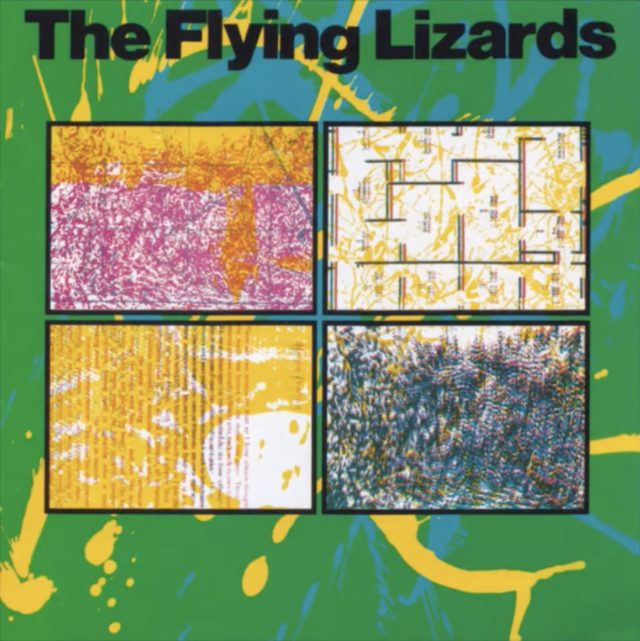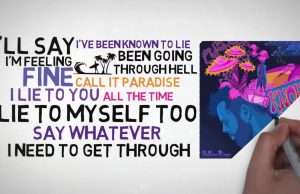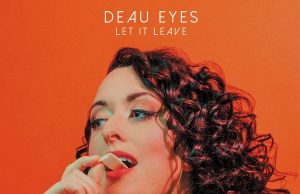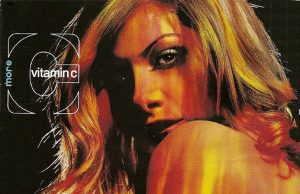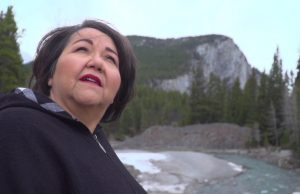 I really made good use of the AV section at my hometown library.
I really made good use of the AV section at my hometown library.
It had bins and bins of vinyl records — more than most stores. Concrete walls plastered with posters. Even a section of 8 mm films you could borrow, including Hey Jude / Revolution and Elton John in the USSR. I had those a bunch of times, as well as reels of Pink Panther and The Inspector cartoons, W.C. Fields films and those classic ’30s and ’40s Universal horror films. I’d hang a bedsheet in the furnace room, drag an armchair in there and play projectionist.
I just sort of taught myself how to run the stuff, based on the illustration on the loaner projector. Eventually, my dad ended up getting me a better one from the school board office where he worked. It was quieter and had two detachable speakers.
Fun stuff. But what I really liked about the library — what kept me coming back — was being able to road-test music I was unfamiliar with, but that looked cool. This is how I first heard Dead Milkmen, Emerson, Lake & Palmer, Peter Green’s Fleetwood Mac — and also how I first heard The Flying Lizards.
I remember being obsessed with the single Money, but before today — honestly — I didn’t remember a single thing about the record apart from that it was weird. Bear in mind, I was probably 12 years old. Well, I saw that album today for $5 and grabbed it for my collection and our further analysis here.
Who the hell were these people?
The band was sort of a loose and sprawling collective of avant-garde musicians who formed in the U..K in 1976. Their aim was the same as punk, except without all the guitar, shouting and violence. This was a new wave approach to maligning the increasingly unimaginative popular music of the day, rather than a rock ’n’ roll approach. Others doing the same included Talking Heads, The B-52’s, Devo and Gary Numan’s Tubeway Army.
Flying Lizards had three vocalists, but the best known was Deborah Evans-Stickland who sang Money and thrice appeared on BBC’s Top Of The Pops. Evens-Strickland was slightly menacing. She was six feet tall, seemingly disinterested or sullen and sang with a monotone spoken style. This was all part of the package, of course. One Evans-Strickland referred to as “pop absurdism.” Brits interpreted it as Thatcher satire and lapped it up.
They weren’t songwriters and weren’t even very good musicians, so they picked Barrett Strong’s Money to learn and cover, paid around £10 for some back-alley studio time and set about making history. When The Beatles covered the same song — considered heavy at the time — it was drums, two guitars, bass and piano courtesy of George Martin. The banger, with John Lennon on lead vocal, was used as the last song on their second album, just as Twist And Shout had closed out their debut.
The Flying Lizards’ version features unique instrumentation, including a bass string hit with a stick to simulate a kick drum and a piano filled with paperwork and ashtrays to mute the strings — making it sound more like a banjo. Somehow, the song was a smash hit in both the U.K. and the U.S. Thus the appearances on Top of The Pops, where they mimed the song. They recorded it and a cover of Eddie Cochran’s Summertime Blues in 1978, and the success of both led to a two-album deal with Virgin Records. Both tracks would wind up on their 1979 eponymous debut, which we are examining today.
The band was formed by producer David Cunningham, who wasn’t much more than a minimalist-obsessed art school graduate at the time. He still does art installations, made seven solo albums and has worked extensively in film and television as well. Also in the group were David Toop on flute, guitar and electronics and Steve Beresford on melodica, bass, trumpet and toy piano. Together, Toop and Beresford credited themselves as General Strike.
These days Toop works as a professor, but has been a major figure in the experimental music scene for decades — authoring books and performing with the likes of Brian Eno and Thurston Moore. Beresford has been and remains an inspirational key figure in the U.K. improvisational music scene. Joining Evans-Strickland on vocals was Vivien Goldman. She wrote and sang the tracks Her Story and The Window on the 1979 debut album. She’s a journalist, author and documentarian.
The album opens with a bonkers rendition of Bertolt Brecht and Kurt Weil’s Der Song Von Mandelay (Mandelay Song in English). It’s like violent Muppets, in German.
Then things transition wildly to the groovy new wave Her Story, which sounds like Starsky & Hutch soundtrack music thrown into a blender with Before & After Science by Eno. Goldman is a great singer. This is an excellent song. I bet the members of Stereolab listen to it when they drive to work.
Next up might be my favourite on the record — the third single, TV. The video is amazing. This has all the coolness of Rocky Horror, with all the Broadway drained like blood into a vampire. There’s weird pseudo vuvuzela-like drones underneath an otherwise ’60s pop production with a catchy organ lick and disarming vocals. It’s so good.
Things get a lot more thin on the track Russia, the first song written solely by Cunningham. There’s, like, no bottom end at all. Imagine playing early Devo with the bass dialed right out and a Stars On 45 drum machine mixed in. Jesus Christ! It’s nearly seven minutes long!
Side 1 wraps with their version of Summertime Blues. I would love to have seen Pete Townshend’s face the first time he heard this. Better yet — Roger Daltrey’s face. I love how the guitar riff is there, but mixed so low it’s almost not. The loudest things in the song are the backing vocals and cling-clang percussion. A death march as performance art, but definitely not in a New Orleans way. This has all the swing of a metronome shoved under a sofa cushion.
The classic Money (That’s What I Want) kicks off Side 2. Any playlist of notable cover songs has to include this. It’s probably easy to overlook the fact that this version was just as influential as the original that got The Beatles so excited. The Flying Lizards showed pop musicians that you can actually be really weird AND catchy at the same time — to the point where you can have an actual Top 10 hit on your hands. It showed punks that you don’t need loud guitars and sneers to flip off the establishment. (One other thing The Flying Lizards didn’t do: Gigs. Excluding the Top Of The Pops appearances, setlist.fm lists just one show, at Brixton Academy in 1986.)
The Flood is next. This one is a cool, sort of angry, ambient synth-guitar thing over top of a heavily gated drum beat. It creates tension by moving slightly on and off the beat. The vocals, which come in halfway through, are dead creepy. If you ever wanted to screw with somebody on acid or mushrooms, put this on. Never mind that — just try to walk through the city with this on your headphones. Makes you feel alien.
Trouble follows, lol. Two of three similar mostly instrumental Cunningham originals in a row. This reminds me of the stuff I made when I was first learning Garageband. Trouble is actually quite a chill, cool ambient track which flows nicely out of The Flood. The same is true with the slightly more ominous Events During The Flood. It starts quite beautifully before the drum beat (a few competing ones, actually) comes in and it feels like a suite of three songs — which I believe it is.
The album wraps with Goldman’s The Window. This has more of a traditional song structure than the previous trio. This one is an evocative call-and-response between Goldman and her thoughts. At issue is a strange man at the window — he’s bigger than her and might be a vampire. Musically, this has great (I hate to keep mentioning them, but…) Stereolab-like backing vocals and a percussive beat. It’s quirky without being annoying, which can be said about this whole record, really — though they do bring it right to the edge of irritating at times.
After The Flying Lizards’ first album, Evans-Strickland departed and formed Deborah And The Puerto Ricans, who put out one EP. She then became a psychotherapist and voice-over artist.
Because, you know, your love doesn’t pay her bills.
3/5
• • •
Area Resident is an Ottawa-based journalist, recording artist, music collector and re-seller. Hear (and buy) his music on Bandcamp, email him HERE, follow him on Instagram and check him out on Discogs.
















